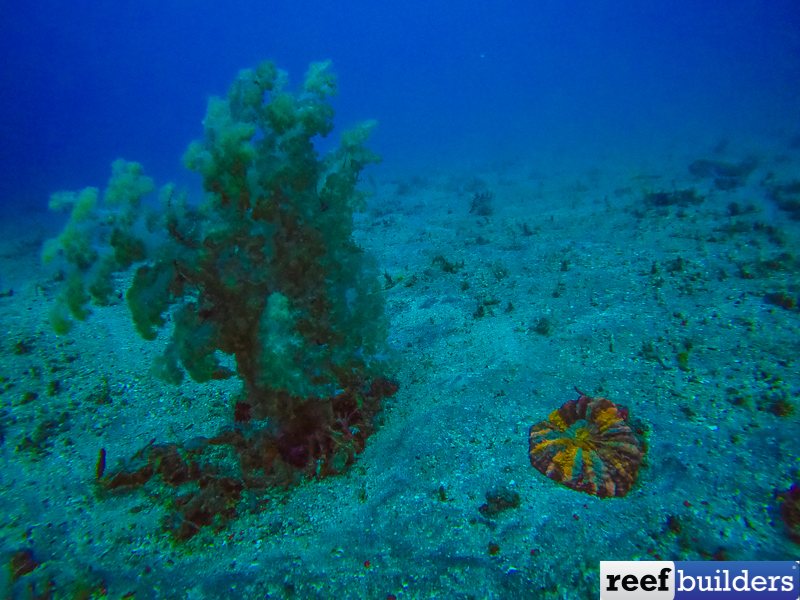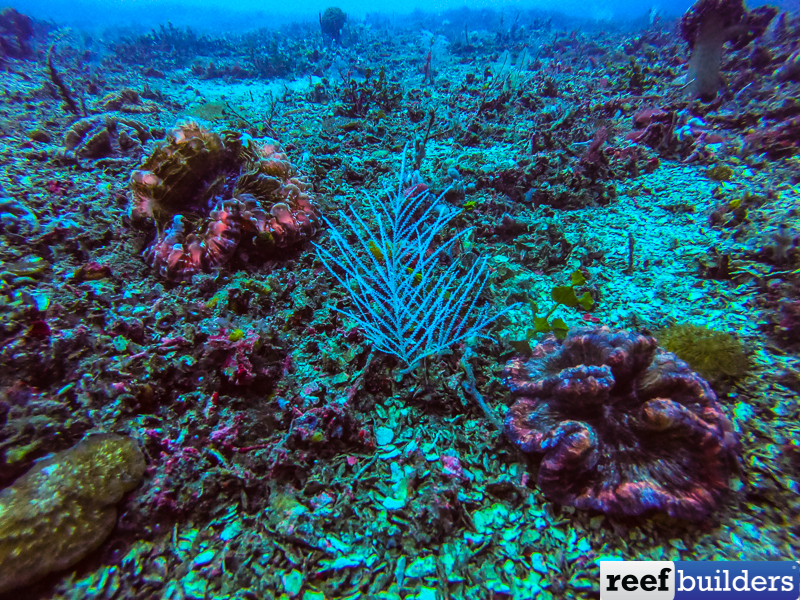It’s been over eight years since the small polyp Euphyllia baliensis was described from the deep waters around the Indonesian Island of Bali. It’s also been around eight years that we’ve been searching for this coral, pushing the limits of safe scuba diving, facing long decompression times every other dive, and gradually losing faith that we would ever see it.
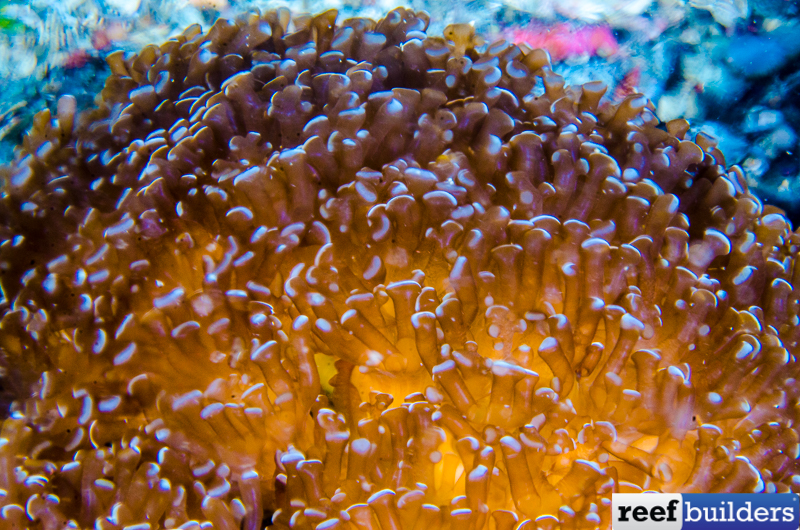
It’s hard to grasp the tiny size of these polyps. 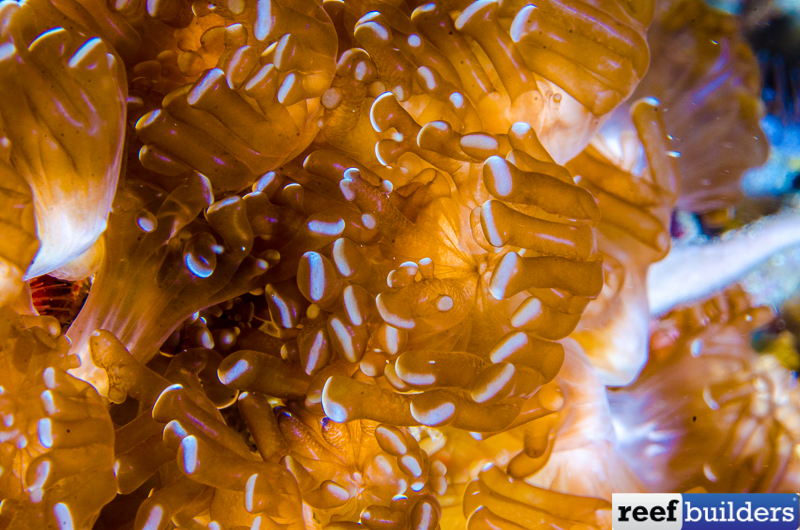
These polyps looked dark orange/pink under water but with 5000 K strobes it looks more pinkish.
Due to its deep and remote habitat, there are less than a handful of people that have ever seen Euphyllia baliensis in its natural environment. Considering the extreme uniqueness of that particular species, the very isolated and deep habitat, it just blows our mind how special this coral is. Euphyllia baliensis might not be special to anyone because they’ve never seen it, but for us this small polyped LPS is the true holy grail of rare and exotic corals.
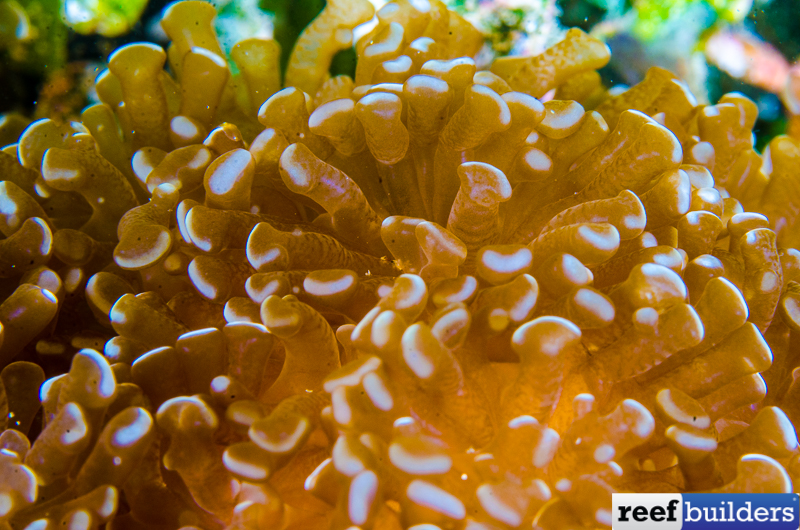
Tiny flower polyps! 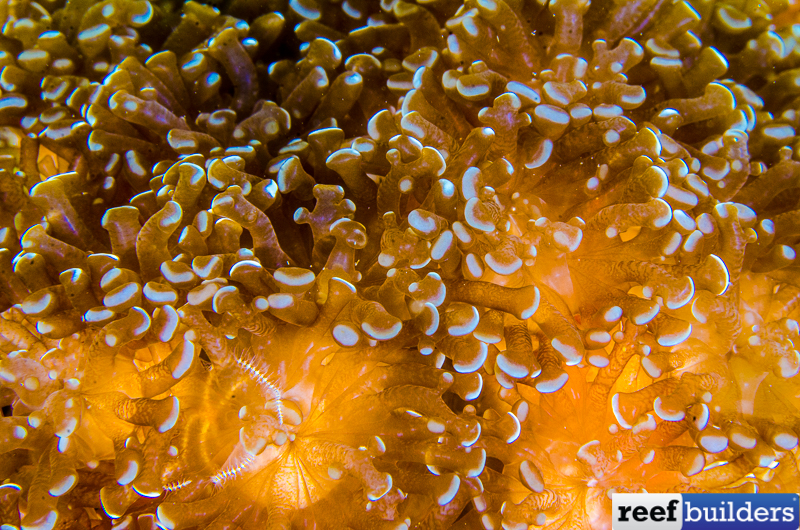
The cutest of all Euphyllia
It cannot be overstated how small the polyps of Euphyllia baliensis are; the tininess of its polyps sets it apart from any other Euphyllia or Fimbriaphyllia. We’re actually not sure if it belongs to any of these because it’s quite different in structure.
E. baliensis is distinguished morphologically from others in its genus by having comparatively very small corallites (averaging 3 mm diameter) and much shorter, thinner, lightly calcified branches. It also exhibits an unusual pattern for Hexacorallia in having four or eight primary and secondary septa. Thus a 4 folds symmetry which is exceptional…
It took hundreds of dives to finally find this enigmatic coral, many aborted due to the very weird conditions common in the South of Bali. Places that no one else dive. Murky deep waters, insane current with dangerous down currents, and huge swell, make the find even more satisfying.
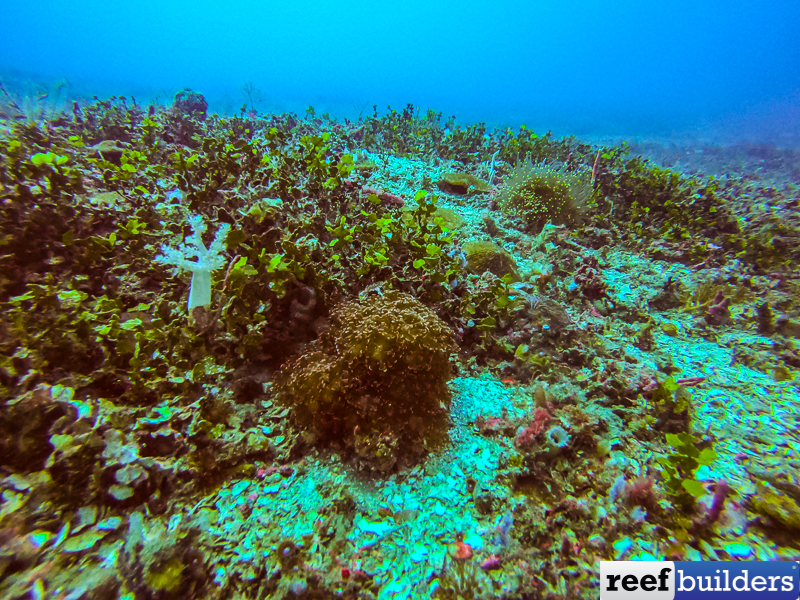
It was around 42 meters (125 ft) deep that we found a single colony of Euphyllia baliensis. At first glance I first thought of what I found was a classic Fimbriaphyllia parancora but smaller. The magnifying effect of the dive mask didn’t really help because we often find that species at this depth too.
Unfortunately, by the time we found it the dive computers were already going crazy, so we had to snatch few pictures quickly leaving almost no time to observe them. Just took few pictures of the open polyps and colony, before waving quickly to the colony to observe the skeleton. And this is when I started celebrating under water seeing polyps and corallites of the skeleton are so thin, just 3-4 mm wide, they actually look like needles!
The more we explore these deep habitats, the more we find unique species of corals. The more we also enjoy the extremely beautiful scenery of these habitats. Flat with Dendronephthya or Umbellifera vertical corals, with scattered insanely colorful corals. While SPS tanks are the highlights of reef tanks, Deep Water LPS tanks are the the frontier of reef keeping!



